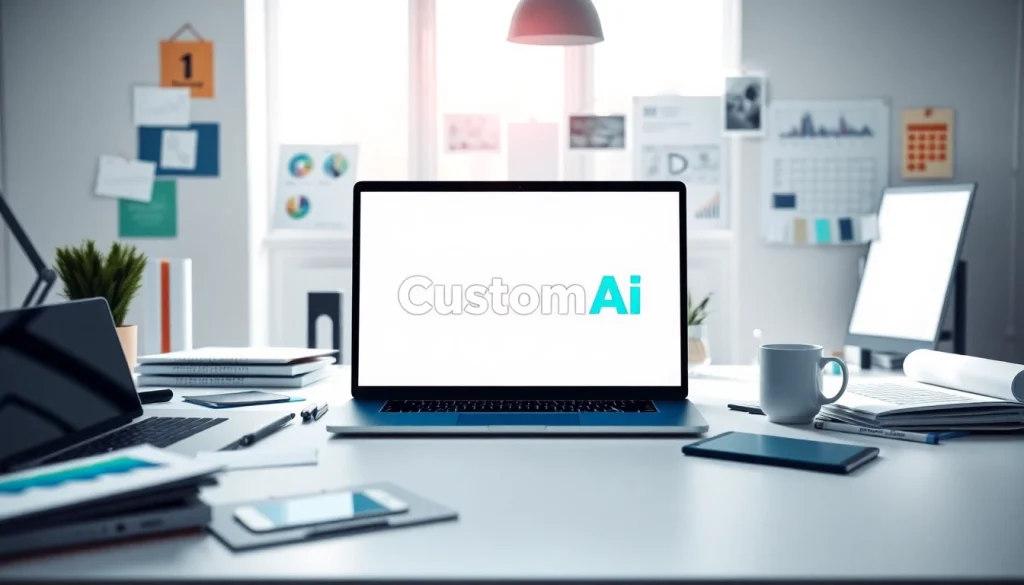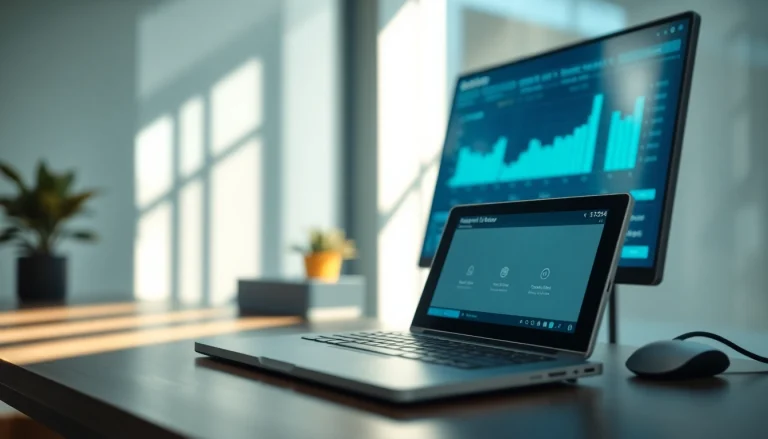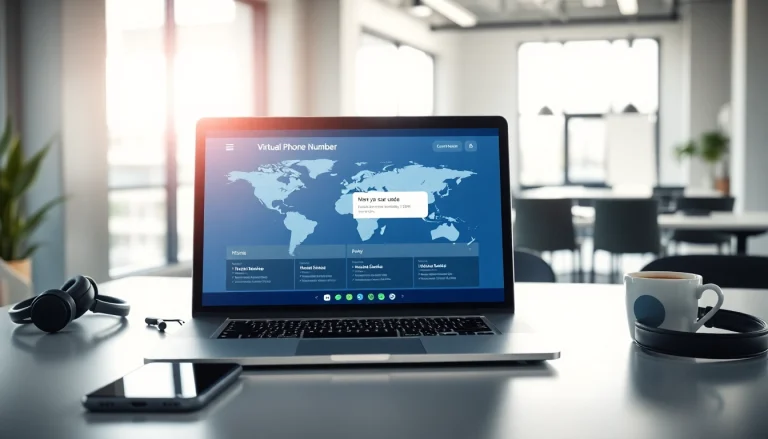
Understanding the Basics of Custom AI Logo Design
In an era where digital presence is tantamount to success, establishing a strong brand identity is more crucial than ever. One of the most pivotal aspects of this identity is a compelling logo. As businesses increasingly leverage technology, custom AI logo design has emerged as a practical solution that provides organizations with both efficiency and creative potential.
The Importance of Brand Identity
A brand’s logo is often the first point of contact with potential customers. It encapsulates the essence of a business—its values, services, and vision—into a single visual representation. A well-designed logo can evoke emotions, foster brand loyalty, and differentiate a company from its competitors. Companies like Apple and Nike exemplify how a strong logo can become synonymous with quality and innovation. In today’s crowded marketplace, creating a memorable brand identity through a unique logo is imperative.
Key Elements of Effective Logo Design
An effective logo design is multifaceted, focusing on several key elements:
- Simplicity: A simple design ensures easy recognition and recall.
- Memorability: It should be distinctive enough to stand out.
- Versatility: A great logo should work across various mediums and applications.
- Timelessness: Trends come and go, but a good logo endures over time.
- Relevance: The design must resonate with the target market and reflect the brand’s core values.
How AI Enhances the Design Process
Artificial Intelligence has revolutionized the logo design landscape by offering innovative tools that streamline the creative process. AI-driven logo generators utilize algorithms and machine learning to produce unique logos in a fraction of the time traditional methods require. This not only accelerates the design process but also allows for a more personalized approach, as users can input specific preferences to generate logos that align with their vision. The fusion of creativity and technology is evident in platforms like Brandmark and Looka, which provide businesses with sophisticated design capabilities.
Exploring Tools for Custom AI Logo Design
With numerous AI logo generation tools available, selecting the right one can be daunting. Here, we delve into some top tools, outlining their features, advantages, and what sets them apart from others.
Top AI Logo Generators Available
Several platforms stand out in the realm of AI logo design, each offering unique functionalities:
- Canva: Known for its user-friendly interface, Canva’s AI logo generator provides customizable templates that make the design process intuitive and straightforward.
- LogoAI: This platform allows users to create logos by simply entering their business name, resulting in instant, tailored designs suitable for various industries.
- Looka: Looka’s generator combines AI with branding experts’ insights, offering diverse logo options that can quickly adapt to specific branding requirements.
- LogoMakr: Aimed at users who seek more control, LogoMakr provides robust editing tools, allowing for advanced customizations.
Free vs. Paid Tools: What You Need to Know
The debate between opting for free versus paid logo design tools boils down to specific needs and goals. Free versions can have limitations in terms of features, templates, and image quality. However, they may be adequate for start-ups or those with a limited budget. In contrast, paid tools often unlock additional features such as high-resolution downloads, support services, and extensive customizations that can facilitate a more professional output. A careful evaluation of the brand’s aspirations and budget will help determine which is the best route.
Comparing Features of Leading Logo Makers
When considering an AI logo maker, it’s essential to compare their features based on various factors:
- Customization Options: How much can you tweak the designs?
- User Experience: Is the interface intuitive and easy to navigate?
- Quality of Designs: How unique and professional do the logos look?
- Customer Support: Is there reliable assistance available?
Reading user reviews and exploring trial versions can help in making an informed choice.
Best Practices for Designing Custom AI Logos
Designing a logo with an AI tool requires a good understanding of your brand and strategic planning. Here are some best practices that will yield successful results.
Choosing the Right Aesthetic for Your Brand
The aesthetic of a logo speaks volumes about a brand’s identity. Color palettes, typography, and shapes all play significant roles in representing a business’s personality. For instance, vibrant colors and rounded shapes might convey playfulness, while monochrome tones and sharp lines can evoke sophistication. It’s essential to align the logo’s aesthetic with the target audience’s expectations and the overarching brand message.
Incorporating Feedback into Your Logo Design
Feedback is invaluable in the design process. Once a draft logo is generated, sharing it with stakeholders or potential customers can yield insights that may not have been apparent initially. Constructive criticism can help refine the design, ensuring that it resonates well with the target market before the final rollout.
Testing Your Logo for Different Mediums
Logos are utilized in a variety of contexts—webpages, social media, printed materials, and merchandise. It’s vital to test how the logo performs across these mediums. Does the design hold up in black and white? How does it look when resized? Effective logos should maintain their integrity regardless of the application. A comprehensive testing phase can prevent potential branding issues later on.
Case Studies: Successful Custom AI Logo Design
To appreciate the impact of effective AI logo design, it’s useful to examine real-world case studies that highlight both successful endeavors and missteps.
Brand Success Stories
One notable example is the logo design for a new beverage startup using AI technology. They utilized an AI generator that prompted various colors and shapes based on their core values. The final logo incorporated energy and freshness, resonating deeply with the target demographic and leading to enhanced brand recognition. Subsequent surveys indicated that 85% of their customers could recall the logo after seeing it only once.
Lessons Learned from Design Failures
Conversely, a well-known fashion brand recently rebranded with a logo generated by AI. While the initial design process was expedited, the logo failed to connect with their audience. A lack of relevant aesthetics led to poor reception, proving that shortcuts in creating logos may backfire. This scenario emphasizes that, while AI can assist in design, human oversight and creativity remain essential.
How AI Adapted to Design Trends Over Time
AI has adapted to serve design needs by continuously learning from market trends. As minimalism and flat design gained popularity, AI tools evolved to prioritize these elements in logo generation. For instance, recent updates in AI logo makers now offer templates that align with modern design preferences, showcasing the technological capability to adapt swiftly to changing trends.
Future Trends in Custom AI Logo Design
The future landscape of custom AI logo design is poised for transformation, influenced by advancements in technology and design philosophy.
The Role of User Experience in Logo Design
User experience (UX) will play a pivotal role in logo design moving forward. Encouraging user feedback during the logo creation process can help designers better understand user emotions and perceptions. This holistic approach to design not only improves functionality but also enhances the emotional connection that users feel toward a brand.
Predicting the Evolution of AI in Design
As AI technology continues to evolve, we can anticipate even deeper integration of machine learning in design tools. Future AI logo generators may be able to intuitively recommend design elements based on historical data and emerging trends, streamlining the process of creating impactful logos. Imagine a scenario where AI adapts designs in real-time based on audience reactions during marketing campaigns.
Emerging Technologies Influence on Branding
Emerging technologies like augmented reality (AR) and virtual reality (VR) will alter how logos are perceived and interacted with. Brands might design logos that adapt contextually when viewed through AR applications, enhancing engagement and user experience. This shift could redefine the very nature of branding, providing opportunities for interactivity and deeper consumer involvement than traditional mediums allow.






